Activated Alumina Market Size
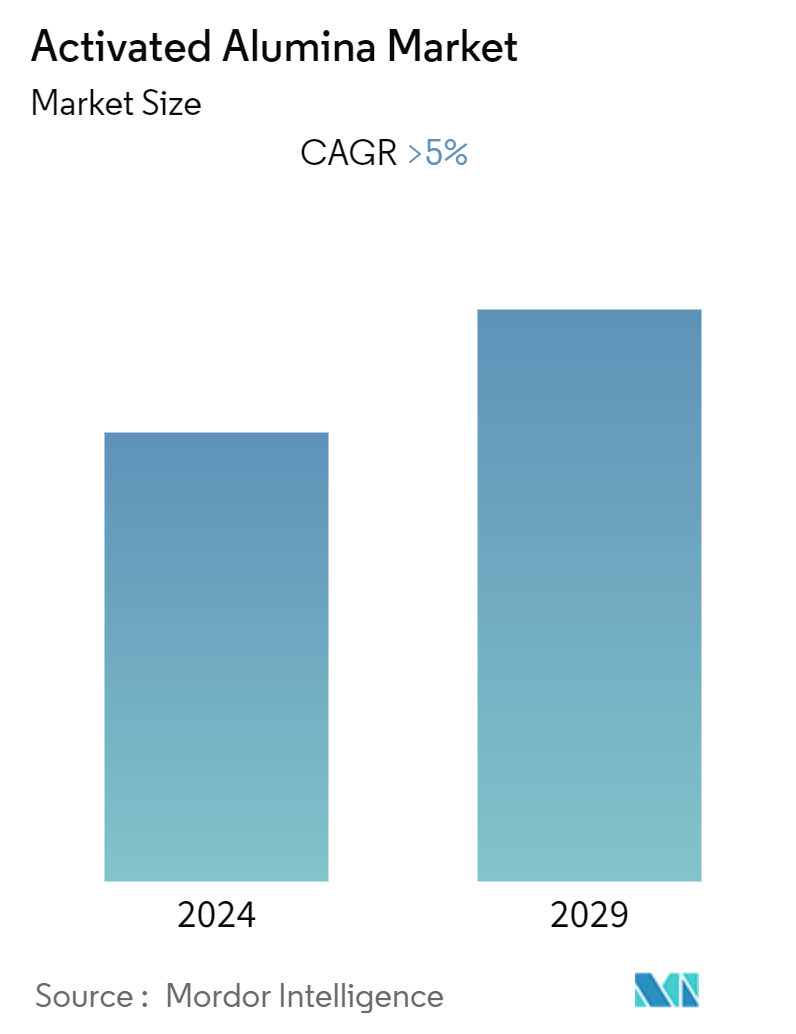
| Study Period | 2019 - 2029 |
| Base Year For Estimation | 2023 |
| CAGR (2024 - 2029) | > 5.00 % |
| Fastest Growing Market | Asia-Pacific |
| Largest Market | Asia-Pacific |
| Market Concentration | High |
Major Players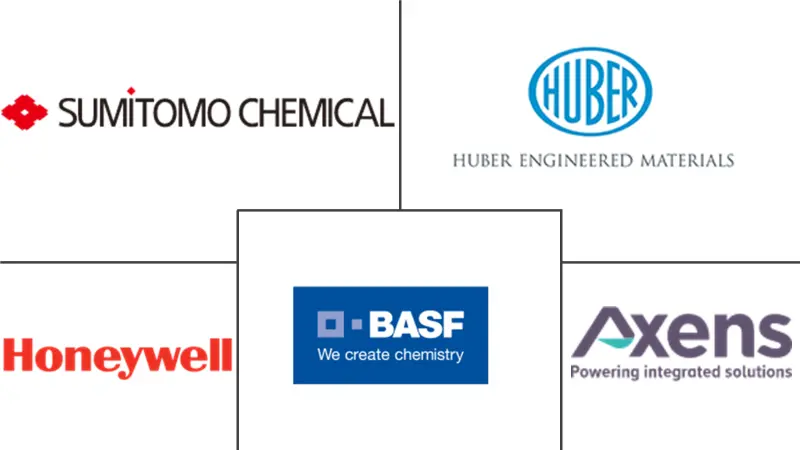
*Disclaimer: Major Players sorted in no particular order |
Activated Alumina Market Analysis
The Activated Alumina Market is expected to register a CAGR of greater than 5% during the forecast period.
Activated alumina, a highly porous form of aluminum oxide, is widely used across various industries due to its excellent adsorption properties. The market for activated alumina is influenced by several factors, which range from environmental concerns to its increasing utility in niche sectors like pharmaceuticals and water treatment. The market's structure is dynamic, with several competing forces shaping its evolution, from the availability of substitutes to the strategic moves by key players in the industry.
Growth Drivers:
- Environmental Concerns: In recent years, the increasing concerns related to water pollution by fluorine have significantly impacted the activated alumina market. The material's ability to adsorb contaminants like fluoride from water sources has led to its growing adoption in water treatment applications. As governments and environmental agencies enforce stricter regulations on water quality, the demand for activated alumina in water treatment is likely to remain strong. This is particularly evident in regions where fluorine contamination in water supplies is a critical issue, such as in parts of Asia-Pacific and Africa.
- Pharmaceutical Applications: The gaining significance of activated alumina in the pharmaceutical industry has also contributed to its growing demand. In this industry, activated alumina is utilized as a desiccant to maintain the integrity of pharmaceutical products by controlling moisture levels during storage and transportation. This characteristic is crucial for preserving the efficacy and shelf life of sensitive drugs, especially in regions with high humidity levels.
Market Challenges and Opportunities:
Competition from Substitutes
- However, the market is not without challenges. The presence of substitutes poses a notable restraint, as alternative materials like silica gel and molecular sieves can be used for similar applications. These alternatives are often preferred due to their cost-effectiveness and specific performance advantages in certain scenarios, such as higher adsorption capacity or more favorable regeneration characteristics. This competition from substitutes compels manufacturers to focus on improving the performance and cost-efficiency of activated alumina to maintain their market position.
Adoption Driven by Environmental Concerns
- Water Treatment Industry: Activated alumina is increasingly essential in addressing water pollution, particularly in the adsorption of fluorine from water supplies. The material's unique adsorption properties make it an effective solution for mitigating the harmful effects of fluorine, which can have severe health impacts when present in drinking water. The heightened focus on environmental sustainability and stricter regulations concerning water quality have led to a rise in activated alumina's demand, particularly in the water treatment industry. This trend is especially prominent in developing regions where water pollution is a significant concern.
- Governmental Support: Governments and environmental agencies are increasingly promoting the use of activated alumina in water treatment processes, further driving its adoption. This support is crucial in regions where natural water sources are heavily contaminated, necessitating efficient and cost-effective treatment solutions.
Rising Importance in Pharmaceuticals
- Desiccant Applications: The pharmaceutical industry has recognized the importance of activated alumina as a desiccant, which is vital for maintaining the stability and shelf life of various pharmaceutical products. Activated alumina's ability to control moisture levels is critical in ensuring the safety and efficacy of these products, particularly in tropical and subtropical regions with high humidity.
- Increasing Reliance: With the increasing complexity of pharmaceutical formulations and the growing demand for moisture-sensitive drugs, the reliance on activated alumina is expected to grow. This trend is particularly relevant as the global pharmaceutical industry expands, with emerging markets playing a key role in this growth. The material's versatility and effectiveness in various pharmaceutical applications, such as in packaging and storage, make it a valuable asset in the industry. As pharmaceutical companies continue to innovate and develop new products, the demand for reliable desiccants like activated alumina is likely to increase.
Activated Alumina Market Trends
Increased Demand from Oil and Gas Industry
- Increased Demand from the Oil and Gas Industry: Activated alumina plays a crucial role in the oil and gas industry, primarily due to its exceptional adsorption properties, making it indispensable in natural gas purification. As global energy demands escalate, the industry increasingly relies on activated alumina to remove moisture, contaminants, and impurities from natural gas streams, ensuring that the product meets high purity standards for both domestic use and export. This trend is particularly evident in the rising demand for high-efficiency purification processes in the sector.
- Impact of Shale Gas Exploration: The boom in shale gas exploration, especially in North America, has significantly boosted the activated alumina market. In these activities, activated alumina is essential for dehydrating natural gas—a critical step in producing and processing shale gas. This demand surge aligns with the global push towards energy security and sustainability, driving further innovation and adoption of activated alumina in the oil and gas industry.
- Role in Refining Operations: Beyond natural gas purification, activated alumina is also vital in refining operations, particularly in hydrodesulfurization processes that aim to reduce sulfur content in petroleum products. This application has gained importance as refineries worldwide face stricter low-sulfur fuel regulations. The drive for cleaner fuels directly contributes to the growing demand for activated alumina, positioning it as a key material in achieving regulatory compliance and environmental sustainability.
- Sustainable Operations and Regulation Compliance: The industry's shift towards more sustainable practices is another driver for the increased use of activated alumina. As environmental regulations become more stringent globally, particularly in regions with significant oil and gas activities, there is a heightened focus on advanced gas treatment and purification technologies. Activated alumina’s role in this process is expected to expand, reinforcing its critical position in the industry’s future landscape.
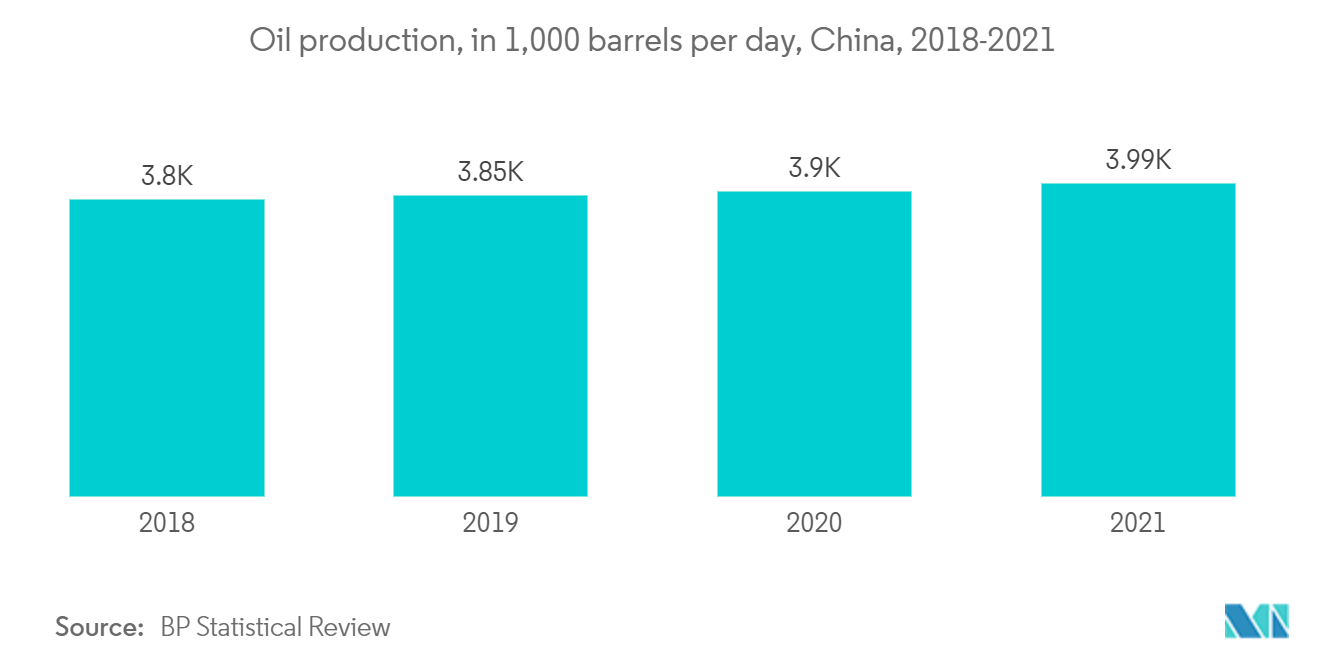
Asia Pacific Region to Dominate the Market
- Industrialization and Urbanization in Asia Pacific: The Asia Pacific region, led by China, India, and Japan, is projected to dominate the global activated alumina market due to rapid industrialization and urbanization. China’s vast industrial base, alongside significant investments in infrastructure and energy projects, drives substantial demand for activated alumina. The country’s leadership in environmental sustainability initiatives, particularly in water purification and air treatment, further amplifies this demand.
- China’s Influence on Global Supply Chains: China not only leads in consumption but also plays a pivotal role in the global supply chain for activated alumina. The country’s influence on market pricing trends and supply chain dynamics is profound, making it a key player in the global market. As China continues to expand its industrial capabilities and environmental initiatives, its demand for activated alumina is expected to grow, reinforcing its dominant position in the market.
- India’s Expanding Energy and Water Treatment Needs: India’s rapidly growing energy sector, coupled with its increasing focus on water quality and chemical manufacturing, creates a robust market for activated alumina. Government initiatives, such as 100% foreign direct investment (FDI) in key segments like natural gas and petroleum products, support this growth. Additionally, the country’s emphasis on improving industrial output and expanding clean energy solutions aligns with the rising demand for activated alumina in water treatment and other critical applications.
- Japan’s Technological Advancements: Although smaller in market size compared to China and India, Japan remains a crucial player in the Asia Pacific region. Known for its advanced technology and commitment to high-quality production, Japan’s demand for activated alumina is driven by its use in high-end applications, including electronics and chemical processing. The country’s strong industrial foundation and focus on innovation ensure its continued relevance and contribution to the regional market's growth.
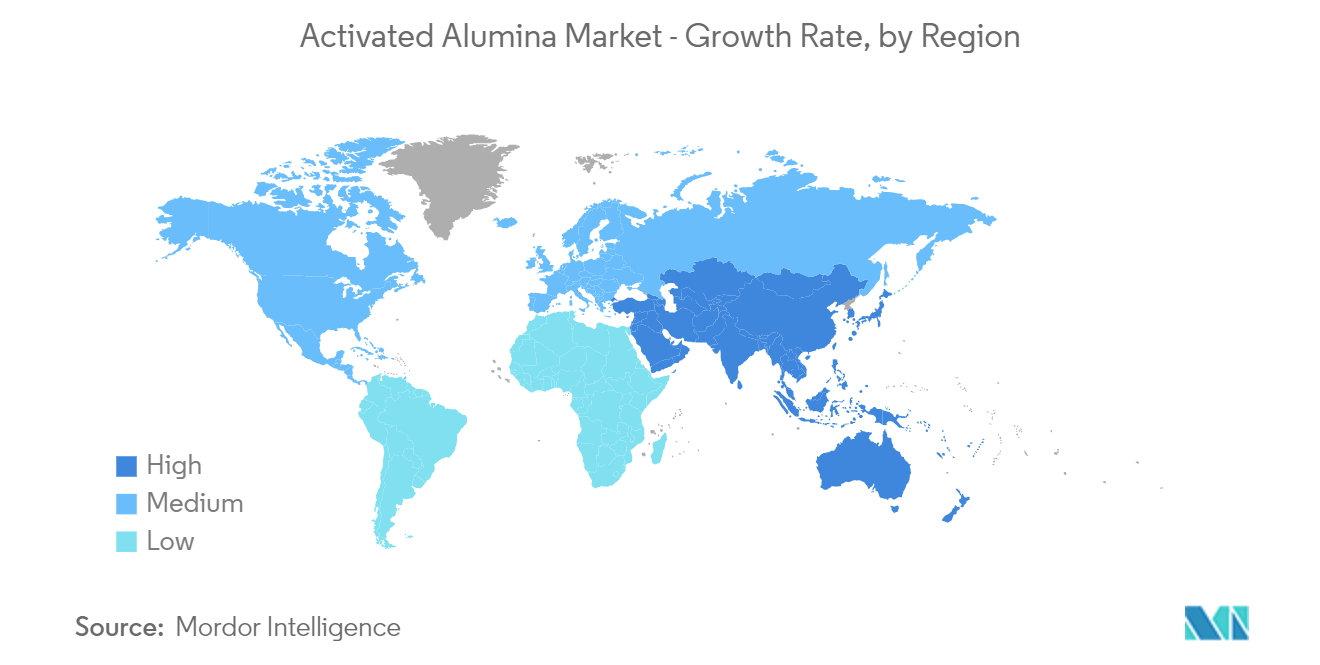
Activated Alumina Industry Overview
Highly Consolidated Market: The global activated alumina market is highly consolidated, with a few major players dominating the landscape. These companies, which are predominantly global conglomerates, have established strong positions through extensive portfolios and well-developed distribution networks. The market's concentrated nature is due to the high barriers to entry, including the need for advanced manufacturing capabilities and significant investment in research and development.
Market Leaders: The leading companies in the activated alumina market include BASF SE, Axens, Sumitomo Chemical Co., Ltd., Honeywell International Inc., and Huber Engineered Materials. These players are recognized for their significant market share, driven by their broad product offerings and innovative approaches to enhancing the performance and efficiency of activated alumina products. Their dominance is further solidified by strategic partnerships and continuous investment in technology.
Strategies for Future Success: For companies to succeed in the activated alumina market, they must focus on product innovation, particularly in the areas of environmental sustainability and enhanced adsorption capacity. Additionally, expanding their presence in emerging markets and maintaining strong customer relationships through reliable service and quality will be crucial. The ability to offer customized solutions tailored to specific industry needs will also be a key differentiator in this competitive market.
Activated Alumina Market Leaders
-
BASF SE
-
Axens
-
Sumitomo Chemical Co., Ltd.
-
Honeywell International Inc.
-
Huber Engineered Materials
*Disclaimer: Major Players sorted in no particular order
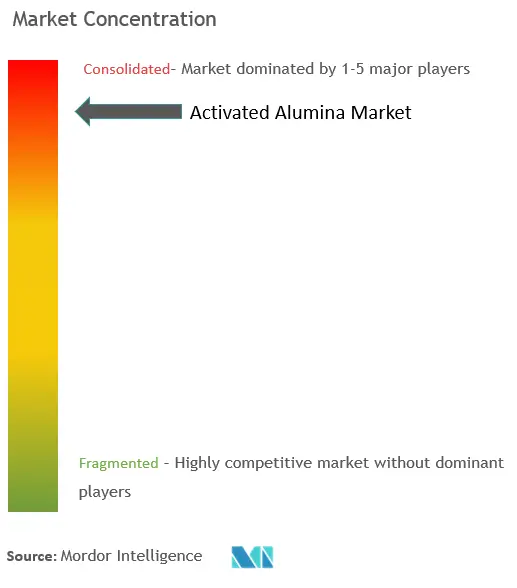
Activated Alumina Market News
- February 2023: Evonik announced the investment in the expansion of its fumed aluminum oxide production plant in Yokkaichi, Japan. The facility will be the company's first alumina plant in Asia. It will focus on making solutions for lithium-ion battery technology, which is used in electric car batteries.The plant is expected to be operational by 2025.
- October 2022: Axens signed an Asset Sale Agreement (ASA) with Canada-based Rio Tinto Alcan regarding the sale by Rio Tinto Alcan of its activated alumina business in Brockville, Ontario, Canada. The business will bring growth potential for new markets globally.
Activated Alumina Market Report - Table of Contents
1. INTRODUCTION
1.1 Study Assumptions
1.2 Scope of the Study
2. RESEARCH METHODOLOGY
3. EXECUTIVE SUMMARY
4. MARKET DYNAMICS
4.1 Drivers
4.1.1 Increasing Concerns Related to Water Pollution by Fluorine
4.1.2 Gaining Significance in Pharmaceutical Industry
4.2 Restraints
4.2.1 Presence of Substitutes
4.2.2 Other Restraints
4.3 Industry Value Chain Analysis
4.4 Porter's Five Forces Analysis
4.4.1 Bargaining Power of Suppliers
4.4.2 Bargaining Power of Buyers
4.4.3 Threat of New Entrants
4.4.4 Threat of Substitute Products and Services
4.4.5 Degree of Competition
5. MARKET SEGMENTATION (Market Size in Value)
5.1 Application
5.1.1 Adsorbent
5.1.2 Desiccant
5.1.3 Catalyst
5.1.4 Other Applications
5.2 End-user Industry
5.2.1 Oil and Gas
5.2.2 Water Treatment
5.2.3 Chemical
5.2.4 Healthcare
5.2.5 Other End-user Industries
5.3 Geography
5.3.1 Asia-Pacific
5.3.1.1 China
5.3.1.2 India
5.3.1.3 Japan
5.3.1.4 South Korea
5.3.1.5 Rest of Asia-Pacific
5.3.2 North America
5.3.2.1 United States
5.3.2.2 Canada
5.3.2.3 Mexico
5.3.3 Europe
5.3.3.1 Germany
5.3.3.2 United Kingdom
5.3.3.3 France
5.3.3.4 Italy
5.3.3.5 Rest of Europe
5.3.4 South America
5.3.4.1 Brazil
5.3.4.2 Argentina
5.3.4.3 Rest of South America
5.3.5 Middle-East and Africa
5.3.5.1 Saudi Arabia
5.3.5.2 South Africa
5.3.5.3 Rest of Middle-East and Africa
6. COMPETITIVE LANDSCAPE
6.1 Mergers and Acquisitions, Joint Ventures, Collaborations, and Agreements
6.2 Market Share (%) Analysis **/Market Ranking Analysis
6.3 Strategies Adopted by Leading Players
6.4 Company Profiles
6.4.1 Axens
6.4.2 BASF SE
6.4.3 Devson Catalyst
6.4.4 Dynamic Adsorbents, Inc.
6.4.5 Evonik Industries AG
6.4.6 Honeywell International Inc.
6.4.7 Huber Engineered Materials
6.4.8 Jiangsu Jingjing New Material Co. Ltd.
6.4.9 KIN Filter Engineering Co.,Limited.
6.4.10 Petrosadid
6.4.11 Sorbead India
6.4.12 Sumitomo Chemical Co., Ltd.
- *List Not Exhaustive
7. MARKET OPPORTUNITIES AND FUTURE TRENDS
7.1 Scope for Use in Industries Like Textiles and Cosmetics
Activated Alumina Industry Segmentation
Activated alumina is a highly porous aluminum hydroxide with a large surface area. It is used in a wide range of applications, such as catalysts, bioceramics, fluoride adsorbents, and others. It can absorb toxic materials from wastewater and aquifers. Application, end-user industry, and geography are the market segments for activated alumina. By application, the market is segmented into catalyst, desiccant, adsorbent, and other applications. By end-user industry, the market is segmented into oil and gas, water treatment, chemicals, healthcare, and other end-user industries. The report also covers the market size and forecasts in 15 countries across major regions. For each segment, market sizing and forecasts have been done on the basis of revenue (USD million).
| Application | |
| Adsorbent | |
| Desiccant | |
| Catalyst | |
| Other Applications |
| End-user Industry | |
| Oil and Gas | |
| Water Treatment | |
| Chemical | |
| Healthcare | |
| Other End-user Industries |
| Geography | |||||||
| |||||||
| |||||||
| |||||||
| |||||||
|
Activated Alumina Market Research FAQs
What is the current Activated Alumina Market size?
The Activated Alumina Market is projected to register a CAGR of greater than 5% during the forecast period (2024-2029)
Who are the key players in Activated Alumina Market?
BASF SE, Axens, Sumitomo Chemical Co., Ltd., Honeywell International Inc. and Huber Engineered Materials are the major companies operating in the Activated Alumina Market.
Which is the fastest growing region in Activated Alumina Market?
Asia-Pacific is estimated to grow at the highest CAGR over the forecast period (2024-2029).
Which region has the biggest share in Activated Alumina Market?
In 2024, the Asia-Pacific accounts for the largest market share in Activated Alumina Market.
What years does this Activated Alumina Market cover?
The report covers the Activated Alumina Market historical market size for years: 2019, 2020, 2021, 2022 and 2023. The report also forecasts the Activated Alumina Market size for years: 2024, 2025, 2026, 2027, 2028 and 2029.
Activated Alumina Industry Report
Our in-depth industry research on the 5G IoT market offers a comprehensive analysis of the latest trends, growth drivers, and challenges shaping this rapidly evolving sector. The report delves into the transformative impact of 5G IoT technology on various industries, highlighting key advancements in 5G IoT applications, network infrastructure, and security measures. By exploring the integration of 5G IoT devices across sectors such as healthcare, automotive, and smart cities, stakeholders gain valuable insights into the opportunities and challenges posed by this technology. The industry report provides critical data and forecasts, ensuring stakeholders are equipped with the necessary information to navigate the 5G IoT ecosystem effectively.
Stakeholders will benefit from our detailed analysis of market data, including industry size, trends, and forecasts, all consolidated into an easy-to-read report pdf format. The report covers essential aspects such as 5G IoT innovations, adoption rates, and infrastructure developments, enabling businesses to make informed decisions. With a focus on actionable insights, the industry report is an indispensable resource for companies seeking to stay ahead in the competitive 5G IoT market, providing a clear understanding of the industry's outlook and the factors driving its growth.
Statistics for the 2024 Activated Alumina market share, size and revenue growth rate, created by Mordor Intelligence™ Industry Reports. Activated Alumina analysis includes a market forecast outlook to 2029 and historical overview. Get a sample of this industry analysis as a free report PDF download.



